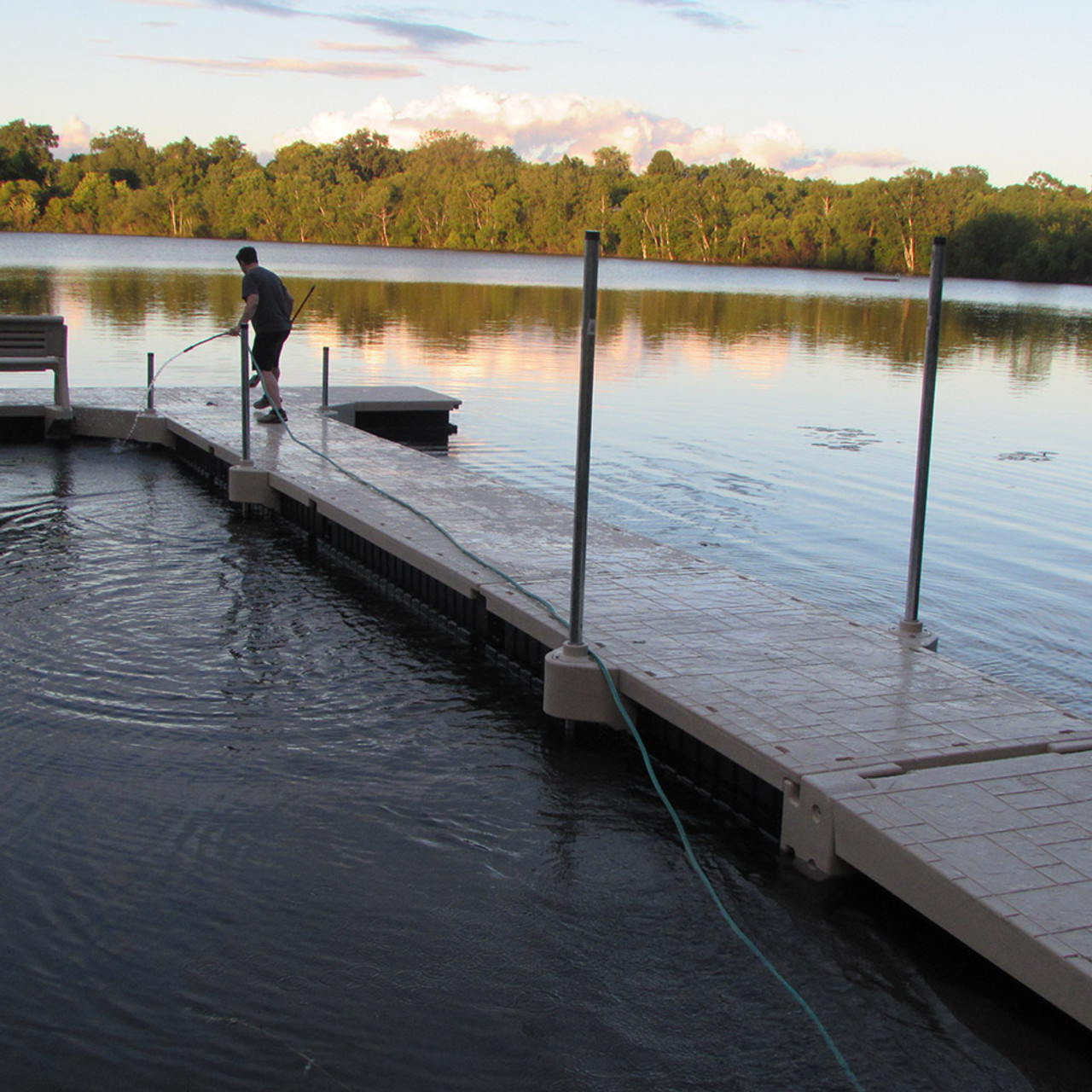Explore the Series Of Floating Dock Solutions Designed to Suit Every Boater's Demands
Explore the Series Of Floating Dock Solutions Designed to Suit Every Boater's Demands
Blog Article
Create the Perfect Docking Option With Floating Docks
Floating docks existing a versatile solution for a selection of maritime demands, adjusting effortlessly to fluctuating water degrees and diverse vessel kinds. As we check out the important aspects that add to the performance of floating docks, a number of crucial elements relating to stability and upkeep will arise, elevating concerns regarding how to enhance your docking experience.

Advantages of Floating Docks
Floating docks offer numerous benefits that make them a perfect selection for various maritime applications. Among the primary advantages is their adaptability to transforming water degrees. Unlike dealt with docks, floating docks fluctuate with the tide, making certain regular availability for vessels. This function is specifically essential in areas prone to significant tidal changes or seasonal water level changes.
Furthermore, floating docks are usually less complicated and quicker to mount contrasted to traditional fixed frameworks. Their modular design allows for uncomplicated setting up and disassembly, helping with upkeep and relocation when required. This adaptability is specifically advantageous for temporary applications or in atmospheres where conditions may alter.
Floating docks additionally tend to be extra eco-friendly, as they minimize disruption to the seabed and surrounding marine communities. Their buoyant nature lowers the threat of damage to marine life, promoting a much healthier atmosphere. In addition, these docks can be tailored to accommodate numerous vessel sizes, guaranteeing that they meet certain operational requirements - floating dock services.
Inevitably, the mix of versatility, convenience of installment, and environmental factors to consider makes floating docks an extremely efficient option for a variety of maritime needs.
Selecting the Right Products
Choosing the appropriate materials for floating docks is critical to ensure security, longevity, and sturdiness. The choice of products straight affects the dock's performance in various environmental conditions, including direct exposure to water, sunlight, and potential wear from marine traffic.
Common products utilized for floating docks include light weight aluminum, timber, and high-density polyethylene (HDPE) Light weight aluminum is light-weight, corrosion-resistant, and requires very little maintenance, making it a superb selection for durability. Its first cost can be higher contrasted to other materials.
Wood, while visually attractive and supplying a traditional appearance, can be prone to rot and pest damage otherwise properly dealt with. Using pressure-treated timber or normally resilient species like cedar or redwood can reduce these issues.
HDPE is a preferred selection because of its resistance to UV rays and chemicals, together with being eco pleasant. dock company. It is light-weight and readily available in various shades, enabling for modification
Ultimately, the appropriate material selection will depend upon particular requirements, including spending plan, desired looks, and ecological considerations. Mindful examination of these variables will cause a resistant and successful floating dock service.
Layout Factors To Consider for Stability
When making floating docks, making sure security is a fundamental facet that can dramatically impact their capability and security. Stability in floating dock style is affected by numerous factors, including buoyancy, weight distribution, and the setup of elements.
Weight distribution is essential; uniformly dispersing loads throughout the dock stops tilting and enhances stability. Larger designs can offer raised security, especially in rough water conditions, while longer docks might require extra supports to protect against drooping.
One more vital factor to consider is the environmental impact, consisting of wave activity and wind. Incorporating functions such as sidewalls or skirting can help alleviate the impacts of ecological pressures, maintaining security in adverse problems. Eventually, a mix of thoughtful design, product choice, and understanding of environmental elements will generate a floating dock that satisfies both security and safety demands.
Setup Tips and Techniques

Next, protect the necessary licenses and adhere to local laws, which may determine installation approaches and ecological factors to consider. Engage a qualified professional experienced in floating dock installments if required. Usage high-grade materials created for aquatic environments to improve longevity and durability.
When placing the dock, straighten it alongside the shoreline to help with easy access. Ensure that the anchoring system is robust, utilizing cinder block or helical supports to stabilize the dock versus wind and wave activity. It's vital to account for seasonal water degree variations, including possible ice activity in chillier environments.
During the setup, double-check the dock's floatation and why not try here security prior to wrapping up the anchoring. Consistently evaluate the installment for any indicators of wear or damage. By complying with these techniques and suggestions, you can achieve a secure, functional, and cosmetically pleasing floating dock installation that fulfills your requirements.
Maintenance and Treatment Standards
Keeping and caring for floating docks is crucial to extending their lifespan and making certain safe use. Routine examinations ought to be conducted to identify any type of indicators of wear, damage, or marine growth. Seek fractures, loosened installations, or discolored areas on the dock's surface, as these concerns can endanger structural integrity.
Cleaning view is crucial. Use a pressure washing machine to remove algae, barnacles, and debris, which can collect gradually. For stubborn growth, consider eco-friendly cleaner that won't damage marine life.
In addition, inspect the mooring lines and anchors frequently to ensure they are safe and cost-free from deterioration. Change any torn or harmed lines quickly to preserve security.
During extreme climate, such as tornados or freezing conditions, take precautionary steps. Secure the dock with extra mooring lines and, if possible, eliminate any kind of removable components to stop damages.
Conclusion
In conclusion, the execution of floating docks presents a efficient and functional docking remedy suitable for various maritime applications. With proper installation and normal upkeep, floating docks can give trustworthy and reliable docking experiences for a vast array of vessels.
As we discover the vital components that contribute to the performance of floating docks, a number of vital aspects pertaining to stability and upkeep will certainly emerge, increasing inquiries concerning just how to optimize your docking this link experience. Unlike repaired docks, floating docks surge and fall with the trend, ensuring consistent access for vessels.When developing floating docks, guaranteeing security is a basic element that can substantially affect their performance and safety and security. Security in floating dock layout is affected by different aspects, including buoyancy, weight distribution, and the plan of elements. Ultimately, a mix of thoughtful design, material option, and understanding of ecological aspects will produce a drifting dock that satisfies both stability and safety and security requirements.
Report this page